






|
Sacred
wells
|
The
religion of the nuraghe's people was
expressed in their
place of the shapes of the
temples is wedded with the wealth of the ex-votos (the most
precious are bronze statuettes).
|
|
|
The
cult of water was prevalent (and of the mysterious being
that lived therein, according to the naturalistic and
animistic beliefs of the time), in the sacred wells. These wells
are underground temples, as shown by
the discovery of bronze statuettes
of the pawerful Mother Goddess.
|
|
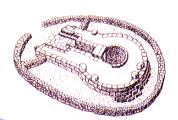 |
|
|
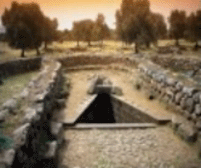 |
|
The shrine has the
shape of a well, of varying,
covered with a dome and preceded by a rectangular hall-way or (rarely)
a round space for the ritual and
the display of the votive
offering and a symbolic
adornments (pillars with or without
decorations).
Their
circular vaulted structure
(tholos ) is that of the nuraghi, subterranean dwelligs of
divine
beings.
|
|
|
The
stairway as
is an entrance to the arcane: the transition from light to
twilight is gradual
and accompanies
the stages
in the trasformation of those who approach the supernatural,
perhaps after the so-called "incubation", a premoniti
sleep in the sacred
place which contact is made
with the deity, or perhaps
for the trial by water, an ancient
form of the ordeal. |
|
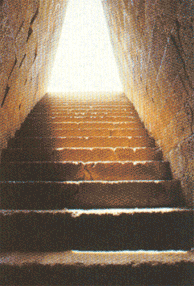
|
|
|
Here
we are in the realms of
imagination. The secrets of the Well of Santa Cristina
are not all laid bare for our
inspection and it way have other
function. On the day of the spring
and autumn equinoxes, for example,
the sun lightens the
stairway right down to the water.
|
|
|
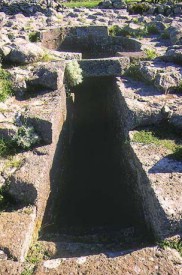 |
|
The
most recent wells temples (14th-13th-
century BC) were built in the same manner as the nuraghi, with
roughly hewn stones and unadorned
partitions, as in examples at Sa Testa
(Olbia), Cuccuru Nuraxi (Settimo San Pietro).
The
structure of the wells of the next period (12th-11th
century BC) are refined, in square-cut stone, with
perfect domes, their
facades carved geometric patterns and bulls’ heads
in relief (alluding to the divinity), sometimes even
painted: this is the case of the temples of
Santa Anastasia (Sardara), Santa Vittoria (Serri), Santa
Cristina (Paulilatino).
|
|
|
These
buidings were related to grat sanctuaries - site where sacred
games and markets were held, as well as meetings of the chiefs for
acts of peace - to which they brought wealth with the treasure of
the temple, the contributions of public institutions and the
offering of the pilgrims. Those
sanctuaries also played a
role of moral and political guidance
in the form of an oracle.
| Another
building of worship is the “megaron” type, with a
rectangular plan
“distyle in
antis" that is with two columns between the antae
or ends of the
sile walls. They had
one, two or three rooms and a pitched
roof, and were equipped
ings were
precious bronze
figurines, locally made, making up a hunting scene. |
|
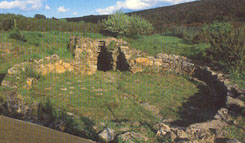 |
|
|
|
|
Nuragic
settlement at Tiscali
At
Supramonte di Oliena (518 metres above sea level), there a nuragic
village with no colossal towers and bastions, the only one of its
kind. An axcess of optimism on the part of its ancient inhabitants?
No, the offer by mother nature of an impregnable natural
fortification in the form of a dolina. |
|
|
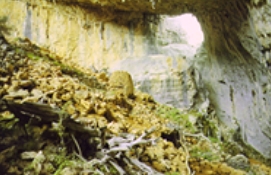 |
|
By
simply concealing the entrance with bushes, they were able to live
undisturbed: the presence of huts on an rectangular ground plan,
probably erected by the Carthaginians, suggest that area was used
for hundreds of years. Some historians have supposed
that it was here the original population took refuge
when the romans spread
all over the island and were hard
on their heels, yet never managed to subdue them for good. |
|
|